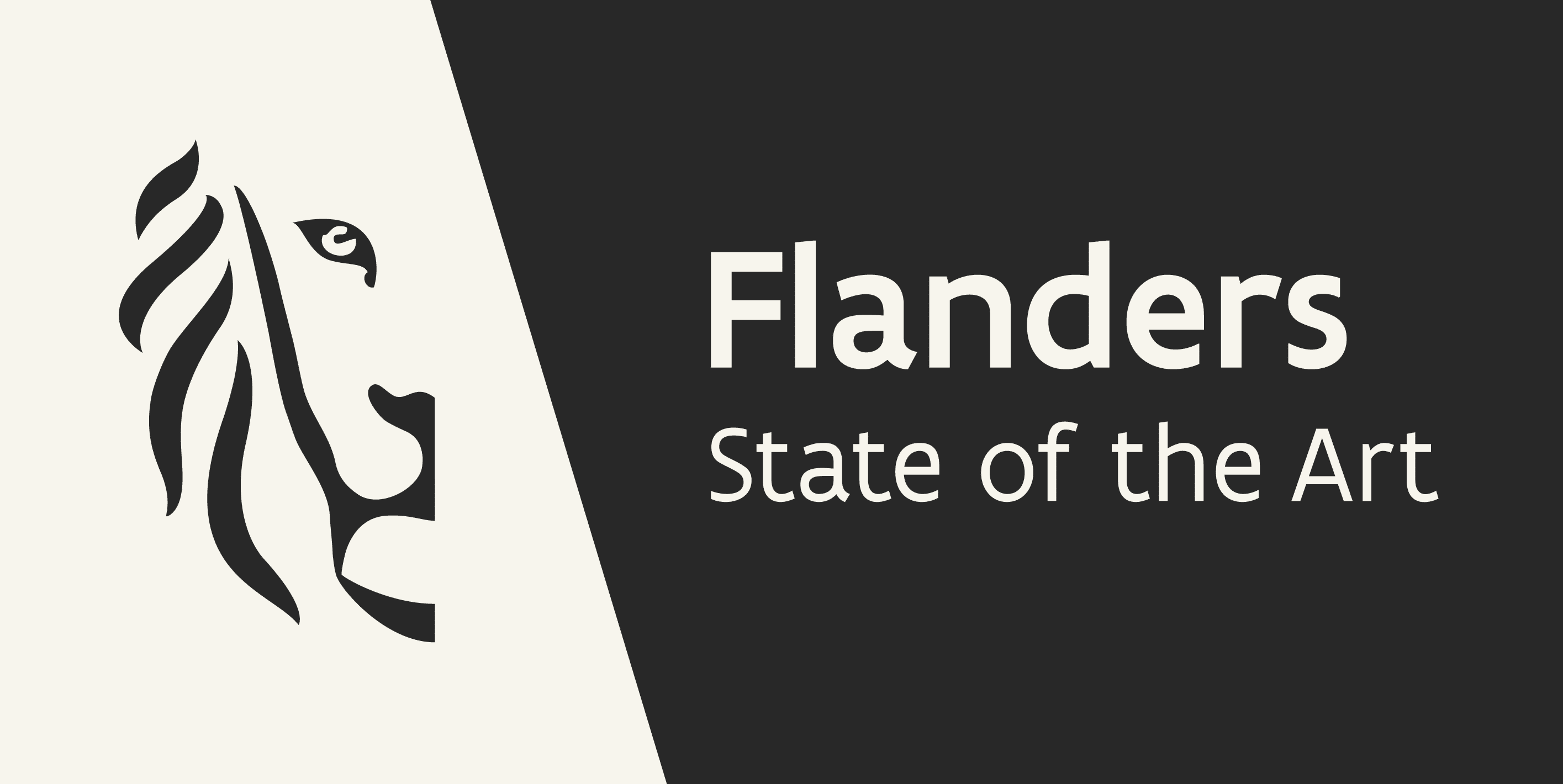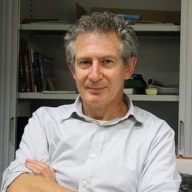On a trip to the capital of the Belgian province of Limburg, Derek Blyth finds comforting food and drinks, innovative architecture and 25 places to be happy.
Yes, this feels like a happy spot, I thought, as I sat on a bench in the Kadettenplein. Hidden down a narrow lane in the heart of Hasselt, this secluded little courtyard is surrounded by an ancient brick wall. Local students come here to eat a sandwich under the shade of old trees. There are modern sculptures and a Little Free Library with an eclectic assortment of books to add to the relaxed mood. It was enough to persuade locals to select it as one of the city’s 25 geluksplekken – happiness spots.
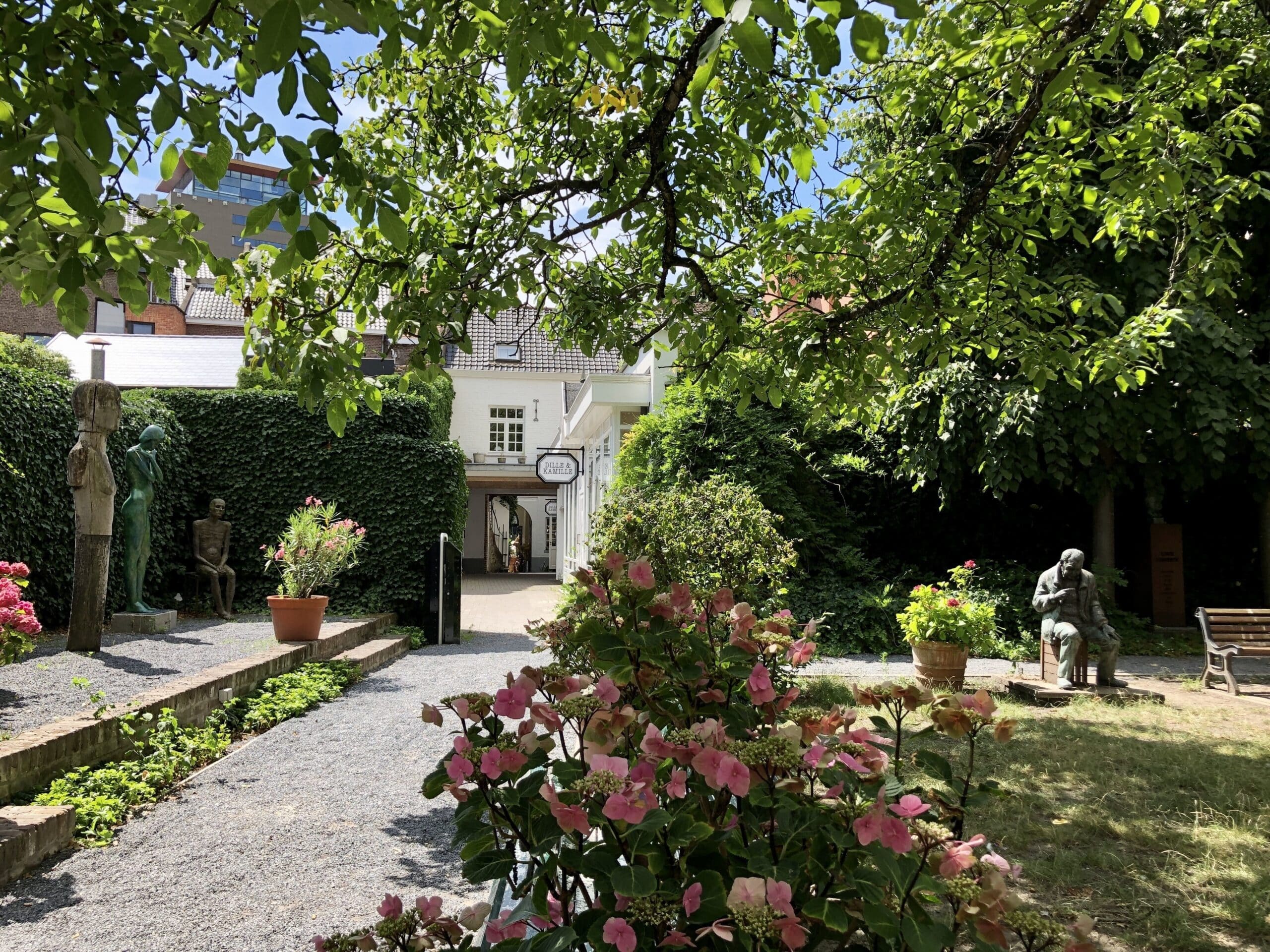 The Kadettenplein is a peaceful happiness spot in the busy centre of Hasselt.
The Kadettenplein is a peaceful happiness spot in the busy centre of Hasselt.© Visit Hasselt
The list was drawn up in 2015 after Hasselt – the modest capital of Limburg province – decided to name itself the world’s first city of happiness. Working with the happiness guru Leo Bormans, author of the World Book of Happiness, the city invited locals to nominate their personal geluksplekken. They came up with 179 places. An organisation called the Embassy of Happiness then selected the best 25 spots to go in search of happiness. At each one, an information panel (only in Dutch) sets out the reasons these spots can boost your mood. It also points out other happy spots to explore in the neighbourhood.
‘This is the ideal spot to listen to the Cathedral carillon,’ says the sign on Kadettenplein. ‘Take a seat on the bench of the carillon player,’ it continues. ‘He composed the melody The Singing Tower.’
I took a seat, as instructed. ‘The carillon is a typical instrument in Flanders and The Netherlands,’ the sign continued. ‘You will hardly find it anywhere else. The carillon you hear in Hasselt dates from 1752 and has 49 bells. René Vanstreels is one of the best-known carillon players. He made it his life project. What is your life project?’
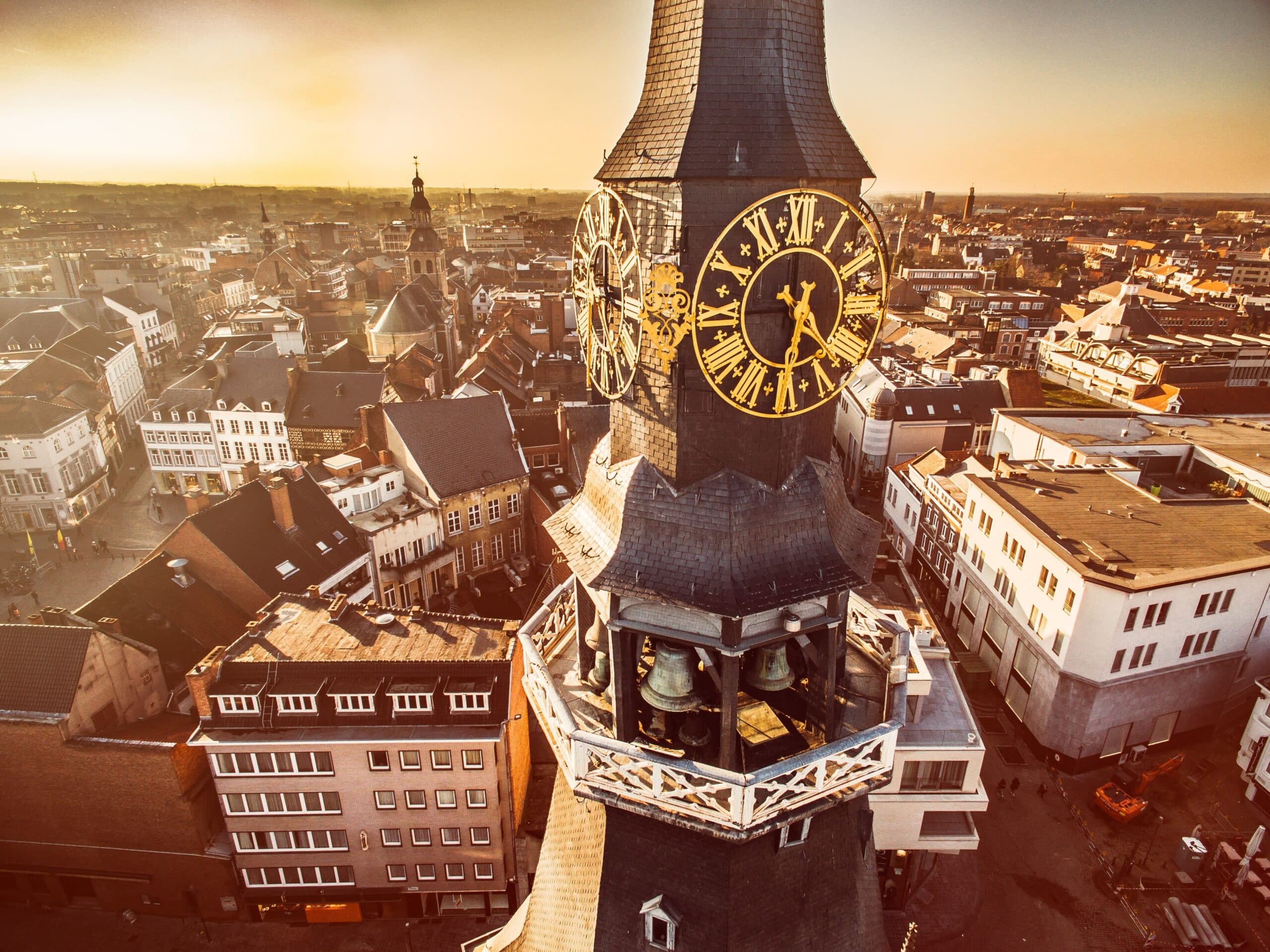 The Carillon Tower is part of the imposing St. Quentin Cathedral.
The Carillon Tower is part of the imposing St. Quentin Cathedral.© Visit Hasselt
I had decided on a plan. A life project, if you prefer. I would track down some more happy spots. Maybe I wouldn’t be able to cover all 25. But I could do a few. It would be like going around with a local to discover their favourite places. Much better than relying on the internet. And it would lift my spirits.
Tracking down the happy spots of Hasselt is like going around with a local to discover their favourite places
Earlier in the day, I hadn’t been all that happy. I had stepped out of the station into an ugly, confusing neighbourhood. There were abandoned cafes, empty buildings, chaotic traffic. The city is working on a plan to transform the station quarter into a ‘visiting card for Hasselt’, according to an information panel. In the meantime, you have to put up with the mess. Don’t worry, be patient.
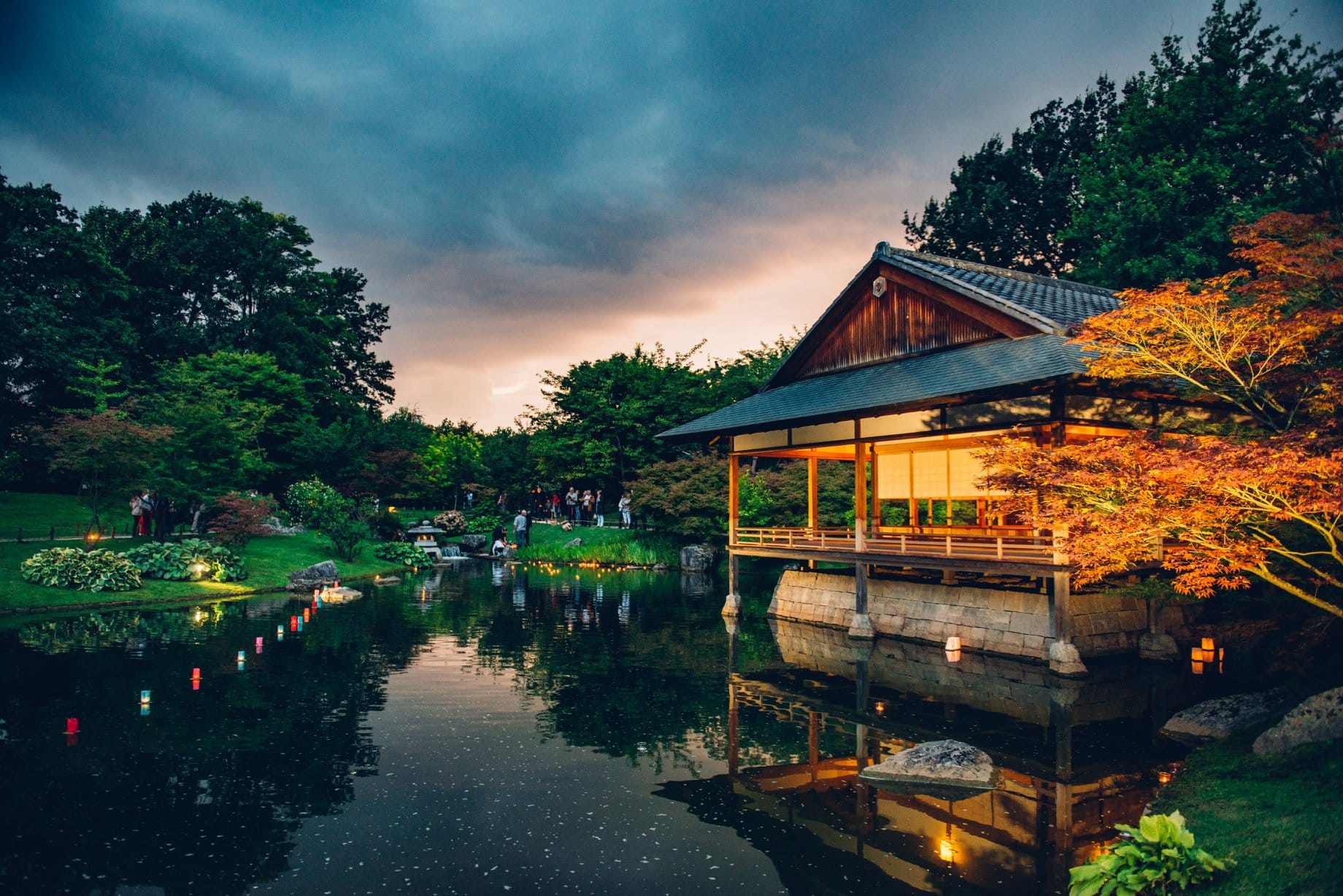 A team of skilled gardeners of Hasselt's twin city of Itami landscaped the Japanese garden.
A team of skilled gardeners of Hasselt's twin city of Itami landscaped the Japanese garden.© Visit Hasselt
My first stop was the Japanese garden. The largest Japanese garden in Europe, they claim. But it’s still quite small. Not that size matters. The garden is an unexpected little paradise squeezed into a site on the edge of the city. It was created in the early 1990s under a twinning agreement with the city of Itami.
The Flemish city provided Itami with a bell tower and carillon. And Itami sent a team of skilled Japanese gardeners to landscape the modest site with a flowing river, small hill, waterfall, tea house and a tiny pebble beach. It is best in spring when the 200 or so cherry blossom trees are in flower. Japanese families make a special trip to Hasselt just to admire the blossom.
The next happy spot was the Begijnhof. An old stone gate leads into the secluded garden. Overlooked by old brick houses, it is a secret, seductive spot. Peaceful now, definitely a happy spot, but the ruined church is a reminder of less happy times. In 1944, bombs fell on this quiet enclave, destroying the church and many of the houses.
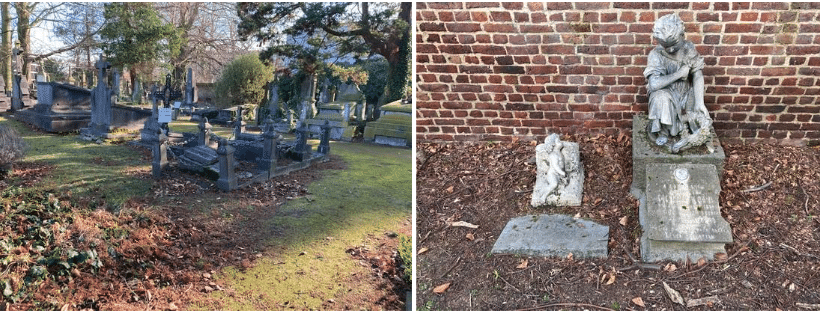 The Old Cemetery is a quiet, reflective spot where ancient, broken tombs are buried in ivy.
The Old Cemetery is a quiet, reflective spot where ancient, broken tombs are buried in ivy.© Derek Blyth
It didn’t take long to walk to the next spot. (It never takes long to get anywhere in Hasselt). The Oud Kerkhof, or Old Cemetery, is a quiet, reflective spot where ancient, broken tombs are buried in ivy. They mark the graves of important local families and former mayors. A little chapel in the middle of the cemetery was open. Inside, I found an exhibition charting the cemetery’s history and rare wildlife.
I had another happy spot to visit. But I needed to rent a bike to reach it. Located out in the countryside, the beautiful Herkenrode abbey looked like it would lift anyone’s mood. And I had worked out how to get there using the unique knooppunten network invented in Limburg province in 1995.
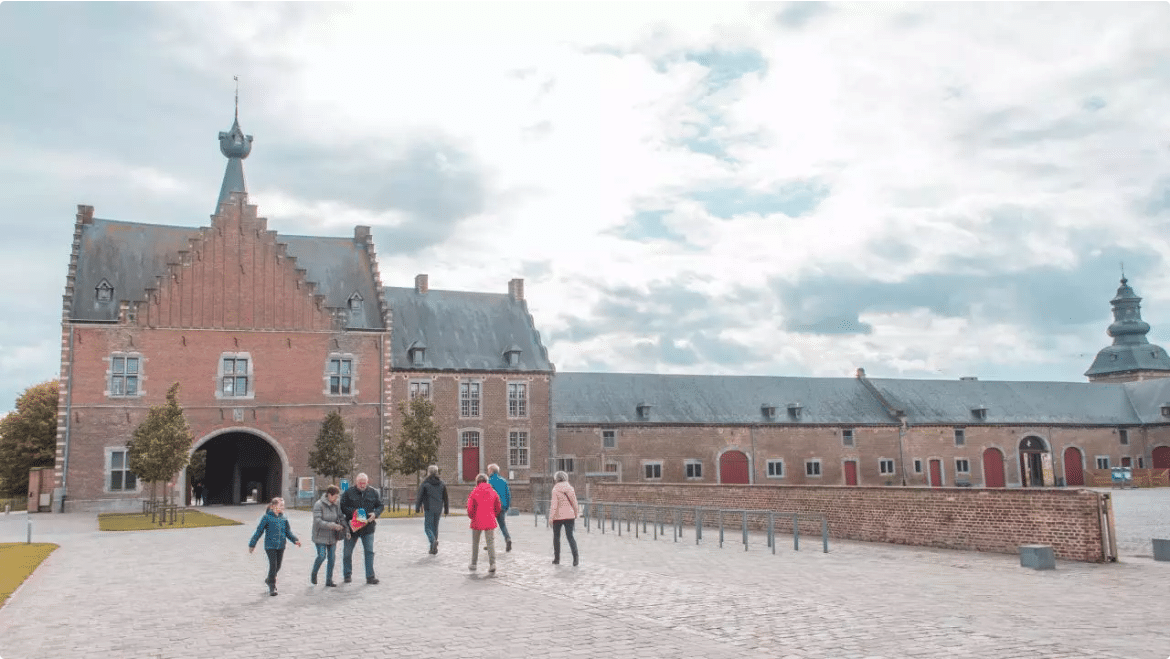 The Herkenrode abbey is more than 800 years old. It was the first Cistercian abbey of the Low Countries and turned into an important pilgrimage place.
The Herkenrode abbey is more than 800 years old. It was the first Cistercian abbey of the Low Countries and turned into an important pilgrimage place.© Visit Hasselt
It works like this. Every intersection is marked with a number, so you simply compose your route as a string of numbers. My trip involved numbers 96, 95, 237 and 94. It came to a total distance of 9km. Then I would have to decide whether to go back the same way, or take a longer round trip, a total of 35km. The highlight being a stretch known as Fietsen door het Water
(Cycling through Water) in the nearby domain of Bokrijk.
I was still feeling fit as I arrived at the abbey. So I headed on through the peaceful Limburg fields to the watery area of lakes where the bike path cuts straight through a pond. It was a strange feeling to be eyeball to eyeball with the ducks. And yes, it made me happy.
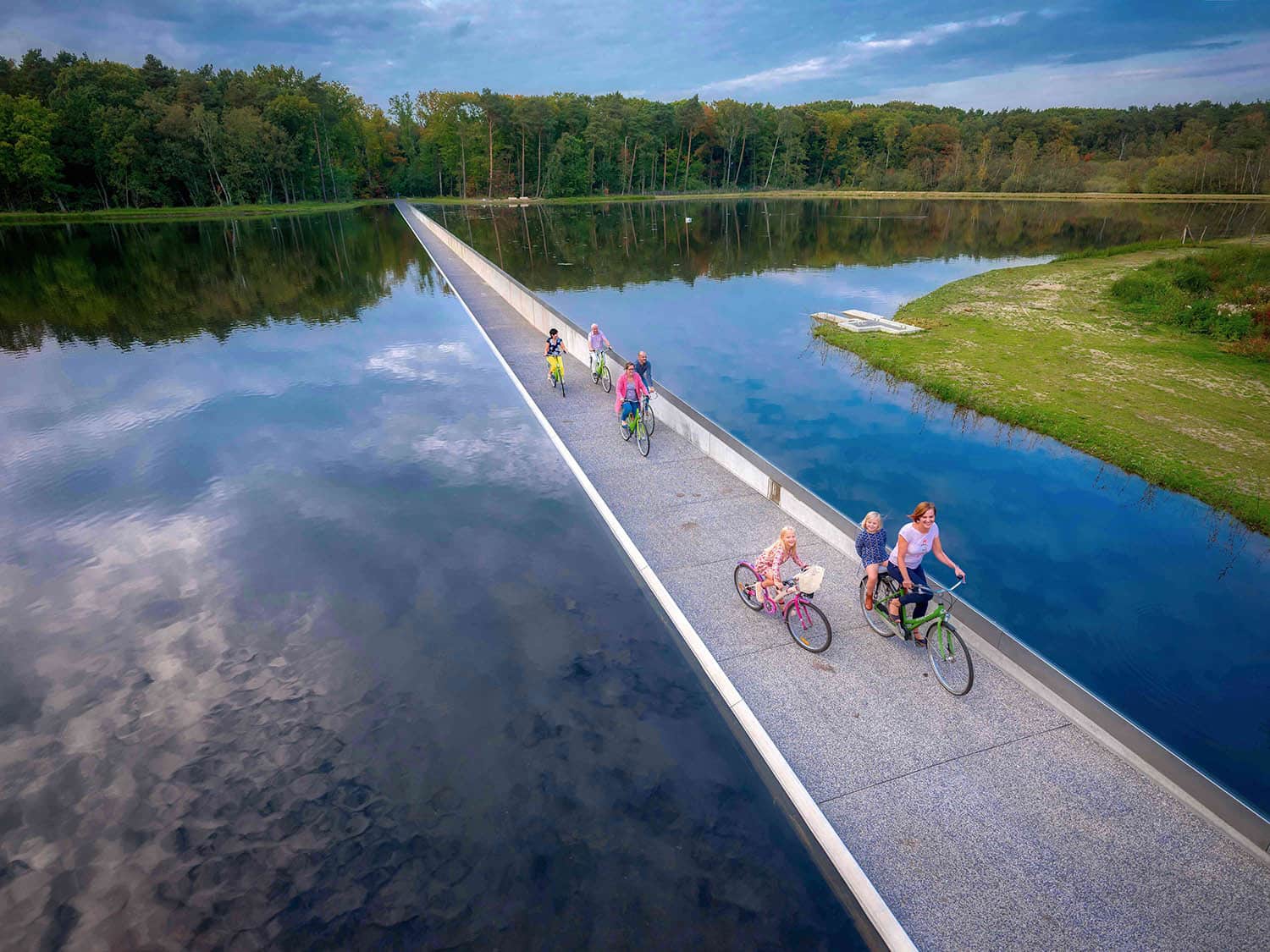 In April 2016 ‘Cycling through Water’ opened, an experience bike trail through a pond of the De Wijers nature reserve in Bokrijk - Genk.
In April 2016 ‘Cycling through Water’ opened, an experience bike trail through a pond of the De Wijers nature reserve in Bokrijk - Genk.© Bokrijk
Back in Hasselt, I headed up to my hotel room. I had booked a night in the boutique hotel Barefood Giulia. Located in a 19th-century town house, it is decorated with quirky details, including multicoloured chairs, hand-painted tables and a rhino head. ‘Happy colours and happy art,’ the cheerful website predictably promised.
***
The first time I visited Hasselt, the city claimed it was Hoofdstad van de Smaak – capital of taste. It still is. Tasteful. You see signs of good taste everywhere, in the fashionable shops, the bustling restaurants, the numerous cake shops. There is even a brasserie called Het Smaaksalon, the Taste Salon. I dropped in there for breakfast.
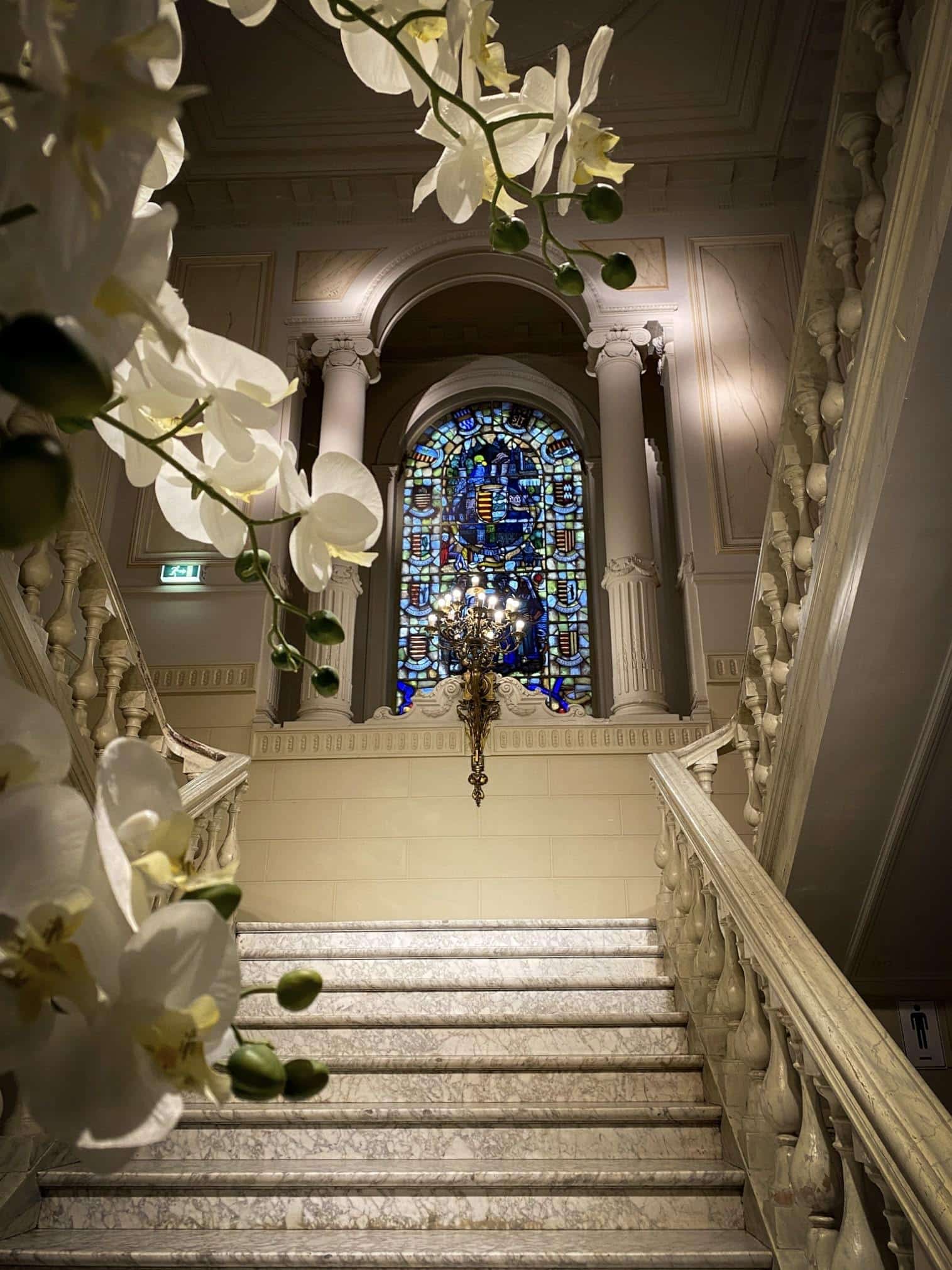 Huis de Corswarem is a spectacular Neoclassical mansion.
Huis de Corswarem is a spectacular Neoclassical mansion.© Visit Hasselt
The building, known as Huis de Corswarem, was built at the end of the 19th century by a wealthy Hasselt family. It is a spectacular Neoclassical mansion with stucco ceilings, gilded pillars, and a huge marble fireplace. The family who owned it eventually ran out of money and had to rent it out. It served as a German officers’ mess in World War One, then a music school, and then the city bought it.
After lying empty for years, the mansion was renovated in 2012 as a landmark restaurant for The City of Taste. The decoration is a little faded, like an old Habsburg palace somewhere in Central Europe, but it is still an impressive spot full of locals enjoying Champagne brunches.
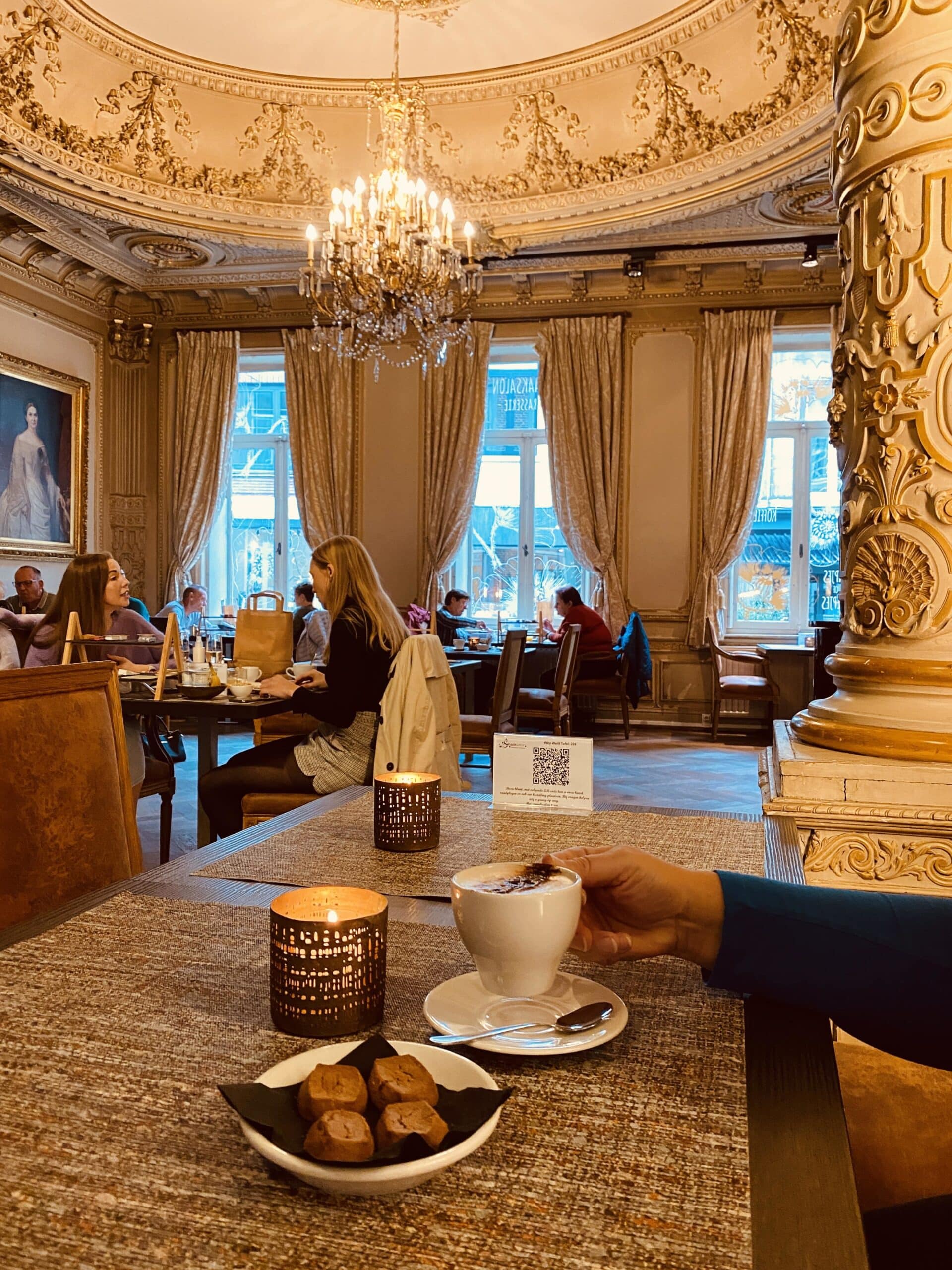 Treat yourself to a local specialty in the Taste Salon.
Treat yourself to a local specialty in the Taste Salon.© Visit Hasselt
The menu focused on local specialities like Stoofvlees met jenever en speculaas (stew simmered in jenever and speculaas biscuit), Limburgse vlaai (Limburg tart) and local apple juice. But it also offered New York cheese cake. Not so local. But maybe they just want to make sure everyone is happy.
I was starting to realise that people in Hasselt liked to have a good time. The city was once voted the most pleasant in Flanders. Walking through the streets, I noticed countless restaurants offering everything you could want to eat, from Flemish brasserie cooking to Thai street food.
There are also dozens of bars where you can drop in for a glass of white wine or, if you want to go native, a shot of Hasselt jenever. You might even come across a narrow lane called Walputsteeg that is crammed with restaurant and cafe terraces. Everyone happily drinking something.
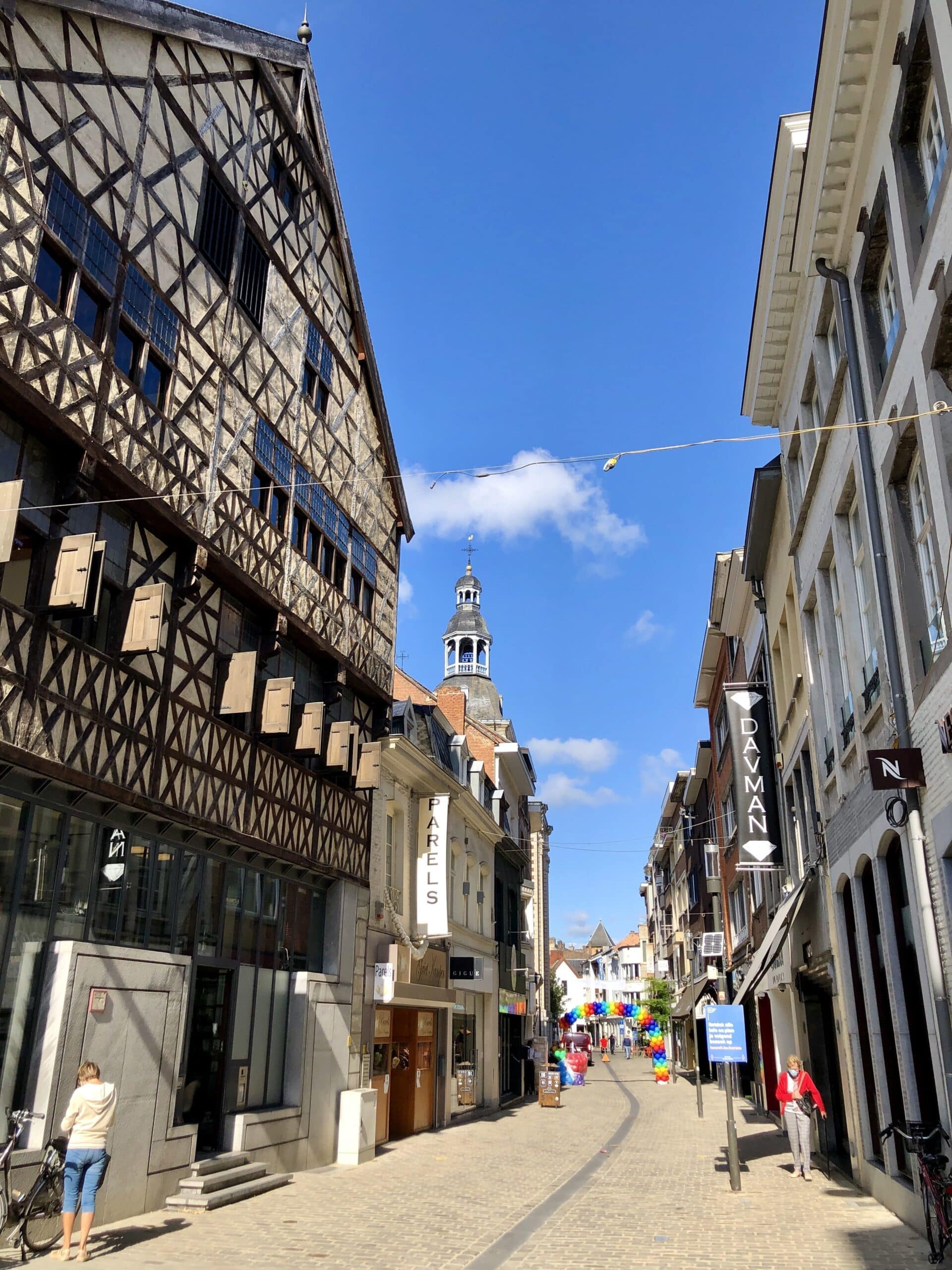 The Kapelstraat is one of many quaint and cosy streets in the heart of Hasselt.
The Kapelstraat is one of many quaint and cosy streets in the heart of Hasselt.© Visit Hassel
The neat cobbled streets (mostly traffic-free) and elegant shops add to the charm of Hasselt. The upmarket stores are located in 18th-century houses on Kapelstraat where brands such as Armani and Gaultier have settled.
The most elegant shop is Helsen Tailors in Diesterstraat where Stijn Helsen has been selling suits since 2007. He runs a family firm founded by his grandfather in 1939. The interior furnished with polished mahogany counters, plump leather sofas and English hunting prints. The English word ‘Tailors’ adds a further touch of class.
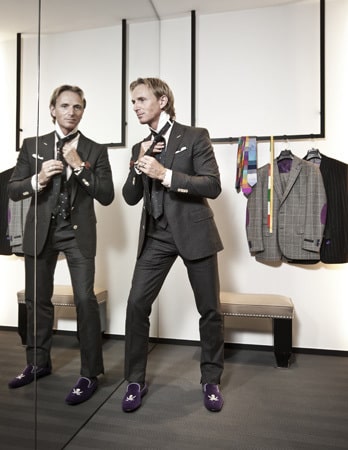 Stijn Helsen has clothed Hollywood stars and the Belgian Olympic team.
Stijn Helsen has clothed Hollywood stars and the Belgian Olympic team.© Wikipedia
Helsen claims he tailored his first pair of trousers at the age of 12. He went on to study fashion in Milan, worked for a time with Vivienne Westwood in London, and then returned to his home town. He has clothed the Belgian Olympic team, created bespoke suits for film stars such as Keanu Reeves, and designed the suit worn by the hero in Spiderman 2.
Many local shops occupy unexpectedly elegant interiors. Patrick Mertens and Inge Lijnen run their chocolate shop in a grand Hasselt mansion. Mertens makes the chocolates an open workshop where you can watch him stir in unusual flavours like juniper, summer fruits and smoke-dried Mexican pepper. You can taste the result of his experiments in a romantic salon where they serve coffee along with their handmade chocolates. I picked up an elegant hand-wrapped box to take home. Make someone happy, I thought.
© Museum of Fashion, Hasselt
The Modemuseum, or Museum of Fashion, shows just what is meant by taste. It isn’t always obvious. In past exhibitions, the curators have dug in the museum’s storerooms to explore concepts like conspicuous consumption, recycled clothes and dress codes. The current exhibition Dress/Undress on nakedness in fashion is curated by the Belgian lingerie designer Murielle Scherre (until 20 November 2022). Her exhibition is a thoughtful, provocative look at body image, gender identity and ideas of fashion.
The museum’s most successful exhibition was dedicated to the singer Axelle Red, who was born in Hasselt in 1968. The city is immensely proud of its red-haired star, even if she mainly sings in French (and occasionally English). No problem. They love her in Hasselt where she was awarded an honorary degree by Hasselt University, and chosen by locals as a Straffe Madam, or Feisty Lady.
Hasselt’s claim to be a city of taste is confirmed by its beautiful Jenever Museum. The museum occupies an ancient brick farm that once belonged to the order of White Nuns. It was turned into a distillery in 1803 and converted into a jenever museum in 1982.
It is an intriguing place that explains the history of jenever distilling, the complex flavours that can be added to improve the taste and the social culture that has grown up around jenever drinking. You can admire old stoneware bottles, a collection of distinctive tulip-shaped glasses and dozens of historic advertising posters that chart the various creative attempts to sell the drink.
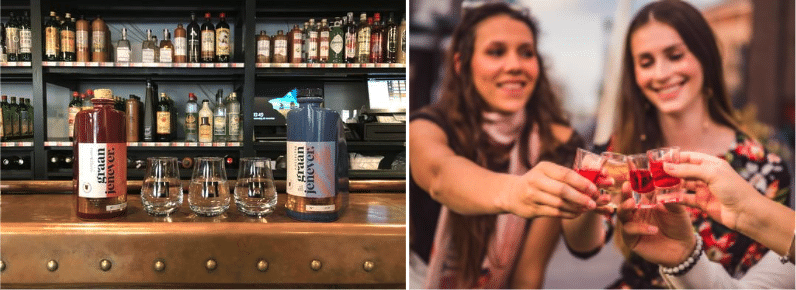 In The Jenever Museum you can discover your favourite jenever flavour in the tasting room.
In The Jenever Museum you can discover your favourite jenever flavour in the tasting room.© Visit Hasselt
But it’s not just a museum. They still make the strong stuff on the site, germinating grain in musty dark cellars and distilling it in a tower where the smell of malted barley hangs around from the last distilling session. The tour ends in a nostalgic tasting room where you are offered a shot of the museum’s own Sint-Lambertus-drèpke, a subtle blend of jenever flavoured with 15 different herbs and spices.
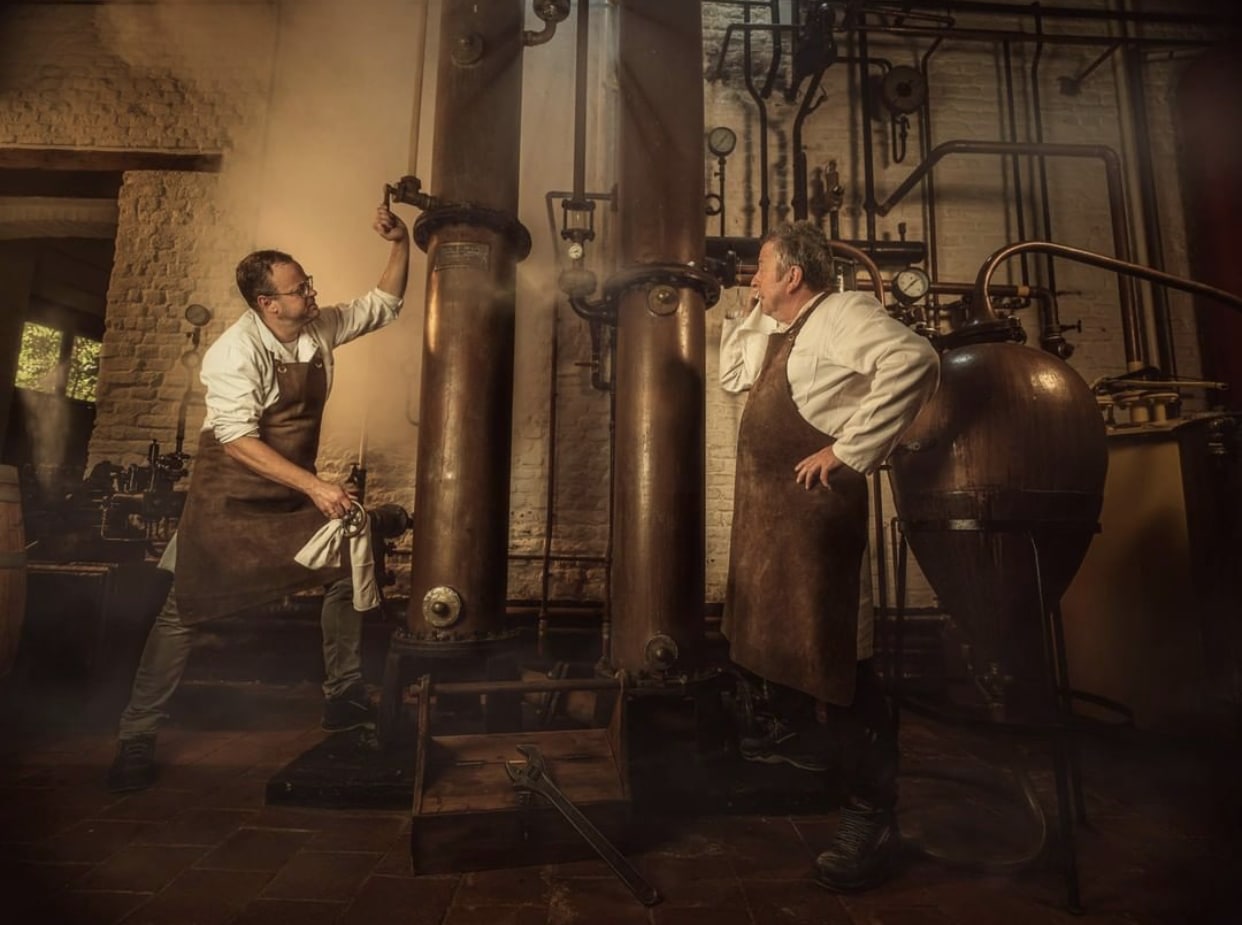 The Jenevermuseum distils a grain jenever in accordance with a 19th century recipe.
The Jenevermuseum distils a grain jenever in accordance with a 19th century recipe.© Visit Hasselt
As I stood in the wood-panelled bar, I couldn’t help thinking that there is something old-fashioned about jenever. ‘It’s a drink a Flemish person would offer an elderly uncle,’ a Flemish friend told me. ‘It’s not a cool drink for young people, not like, say, Aperol Spritz.’
Every year, Hasselt hosts a Jenever Festival in an attempt to change the perception that it is an old man’s drink. One year, they printed posters showing a pretty young blonde drinking from the same glass as an old man. ‘Jenever gets sexy,’ ran the excited headline in a local newspaper.
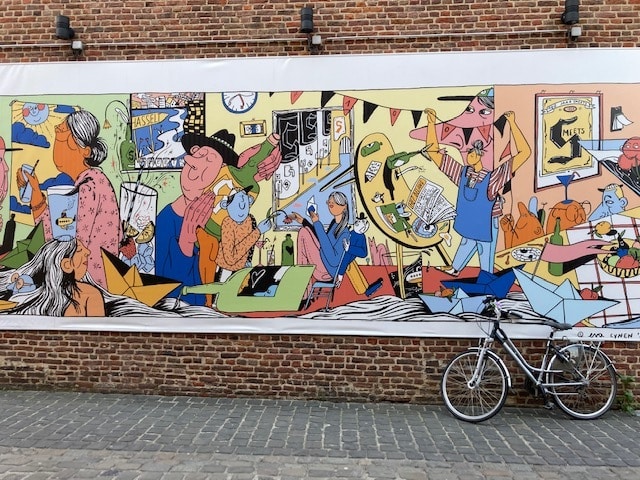 A mural by illustrator Eva Lynen marks the 100th anniversary of Smeets jenever.
A mural by illustrator Eva Lynen marks the 100th anniversary of Smeets jenever.© Derek Blyth
Opposite the museum, a large mural is the latest attempt to turn jenever into a hip drink. The illustrator Eva Lynen created the mural in 2021 to mark the 100th anniversary of Smeets jenever. The work is filled with baffling details linked to the Hasselt brand that only a local might understand, including a submarine and some paper boats.
***
I might have left Hasselt at that point feeling perfectly happy. But there was another side to the city that I hadn’t expected. It has emerged as a centre for contemporary art and architecture. This new spirit is centred on Z33. Named after its address (Zuivelmarkt 33), it exhibits works by international designers and artists in a modernist exhibition hall dating from 1958. Temporary exhibitions make creative use of the building’s vast empty spaces, but art is also displayed in the nearby Begijnhof houses, in the streets of Hasselt and out in the countryside between Hasselt and Genk.
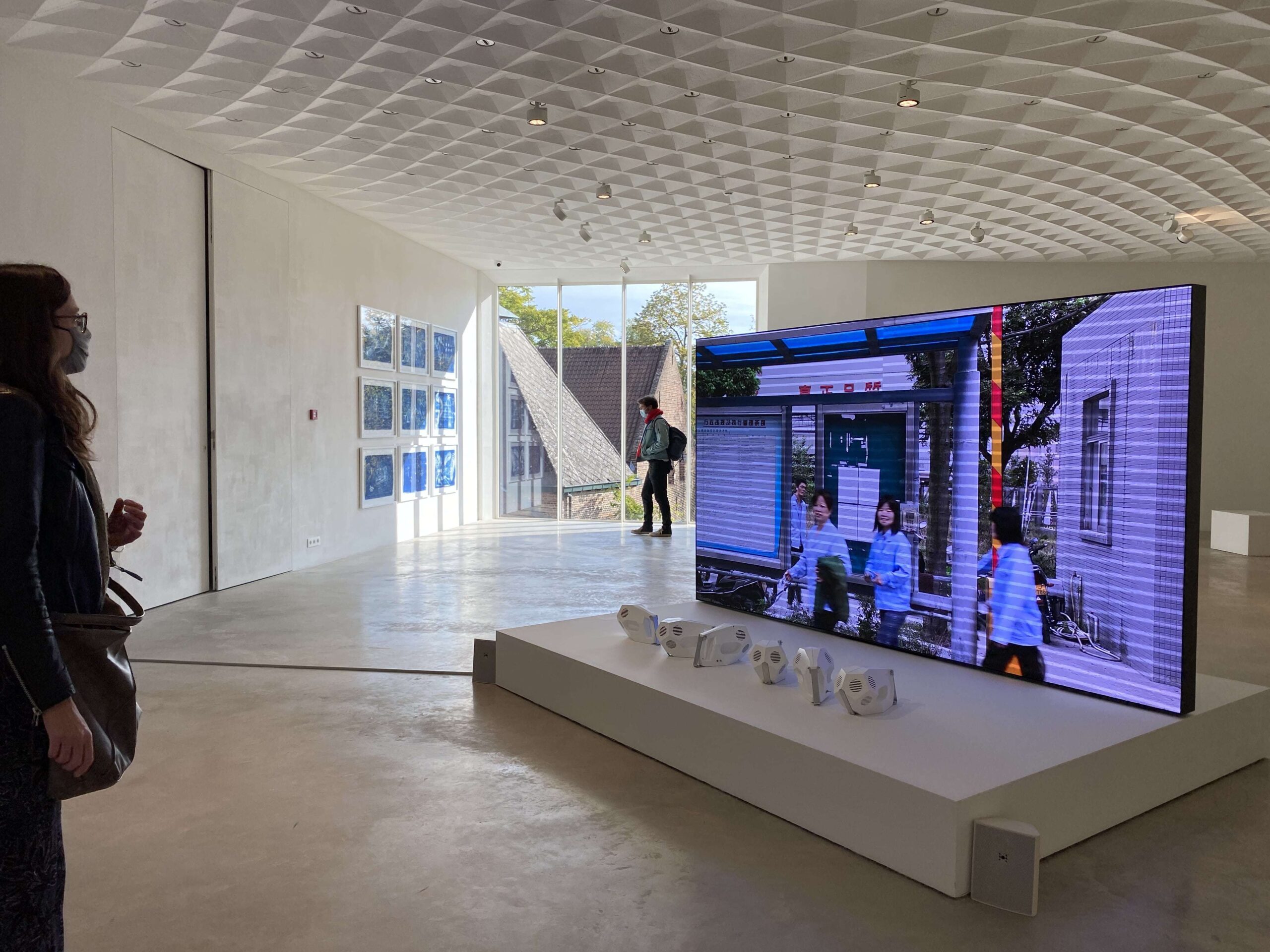 Z33, House for Contemporary Art, Design & Architecture
Z33, House for Contemporary Art, Design & Architecture© Visit Hasselt
A new exhibition space opened here in 2020. It is called Vleugel 19
(Wing 19) while the older building is now Vleugel 58 (the numbers refer to the founding year 1958). Designed by Italian architect Francesca Torzo, Vleugel 19 is intended to evoke the mood and colours of a mediaeval town, with little squares, alleys and a gurgling fountain. The building won the Italian Architecture Prize in 2020 and was shortlisted for the prestigious Mies van der Rohe prize in 2022. The new wing caught the eye of The Guardian architecture critic Rowan Moore, who listed it as one of the five best buildings of 2020. ‘A work of pleasure and beauty,’ he called it. And another happy spot, according to locals.
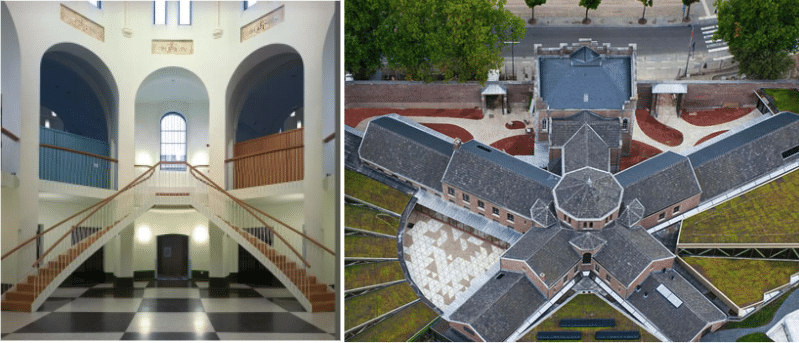 The Old Prison of Hasselt was given a new purpose in 2012 as Hasselt University's Faculty of Law.
The Old Prison of Hasselt was given a new purpose in 2012 as Hasselt University's Faculty of Law.© Wikipedia / noArchitecten
Not far away, the city has converted a 19th-century panopticon prison into the university law faculty. The architecture firm noArchitecten won the competition to redesign this grim institution. Standing inside the old prison courtyard, I noticed the individual cells had been converted into study rooms. Looking more closely, I saw the glass doors were marked with tally lines imitating the lines scratched by prisoners on their cell walls, one line for each day.
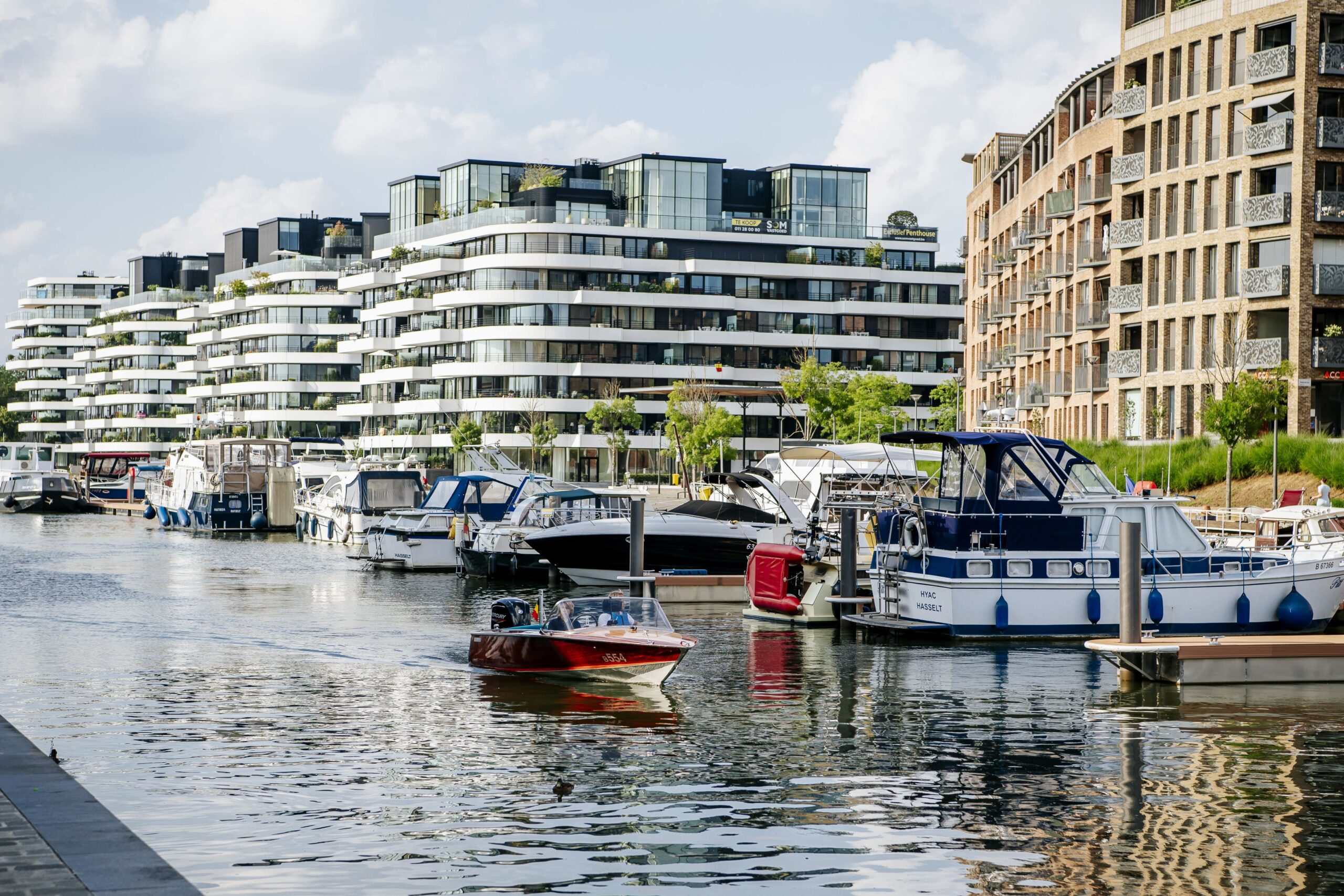 The Blauwe Boulevard
The Blauwe Boulevard© Visit Hasselt
I was not far from another new spot. Too new perhaps to be listed as a happy spot. The Blauwe Boulevard is a smart waterfront district overlooking a small inland harbour. ‘Experience the Côte d’Azur in the heart of Hasselt,’ the website proclaims. Maybe not on a rainy day. But Quartier Bleu (its chic French name) is an impressive new neighbourhood with restaurants and bars along the quayside and shops on the upper level.
One question was still bothering me. ‘Where does Hasselt get all its money?’ I asked a local. ‘Have you heard of Corda Campus?’ he asked. No, I had not. ‘It’s the Silicon Valley of Belgium.’
I was sceptical. Lots of places call themselves Silicon Valley. Most are not. ‘This is different,’ he insisted. I looked it up online. It was a business park on the site of an abandoned Philips electronics factory where small tech companies were doing exciting things. Corda Campus was ‘the factory floor of the future,’ someone in the Flemish government has said.
‘Come build the future with us,’ its website announces. And more than 250 companies have done so. They employ 5,000 people, making Corda one of the largest business campuses in Europe. The site has a science fiction look. There are electric car charging points, e-bikes to rent and a cool bar.
I was beginning to understand Hasselt. If you ignored the ugly station quarter, this is a dynamic city that is creating new neighbourhoods and exciting start-ups. Everywhere you walk, there are signs of progressive architecture, new concept stores, revived neighbourhoods.
I ended up inside the futuristic city hall which opened in 2018. Known as ‘t Scheep (The Ship), it is a bright, welcoming building with a low carbon footprint. ‘Hasselt Heeft Het’ – Hasselt Has It, reads a sign at the entrance, another slogan to remember.
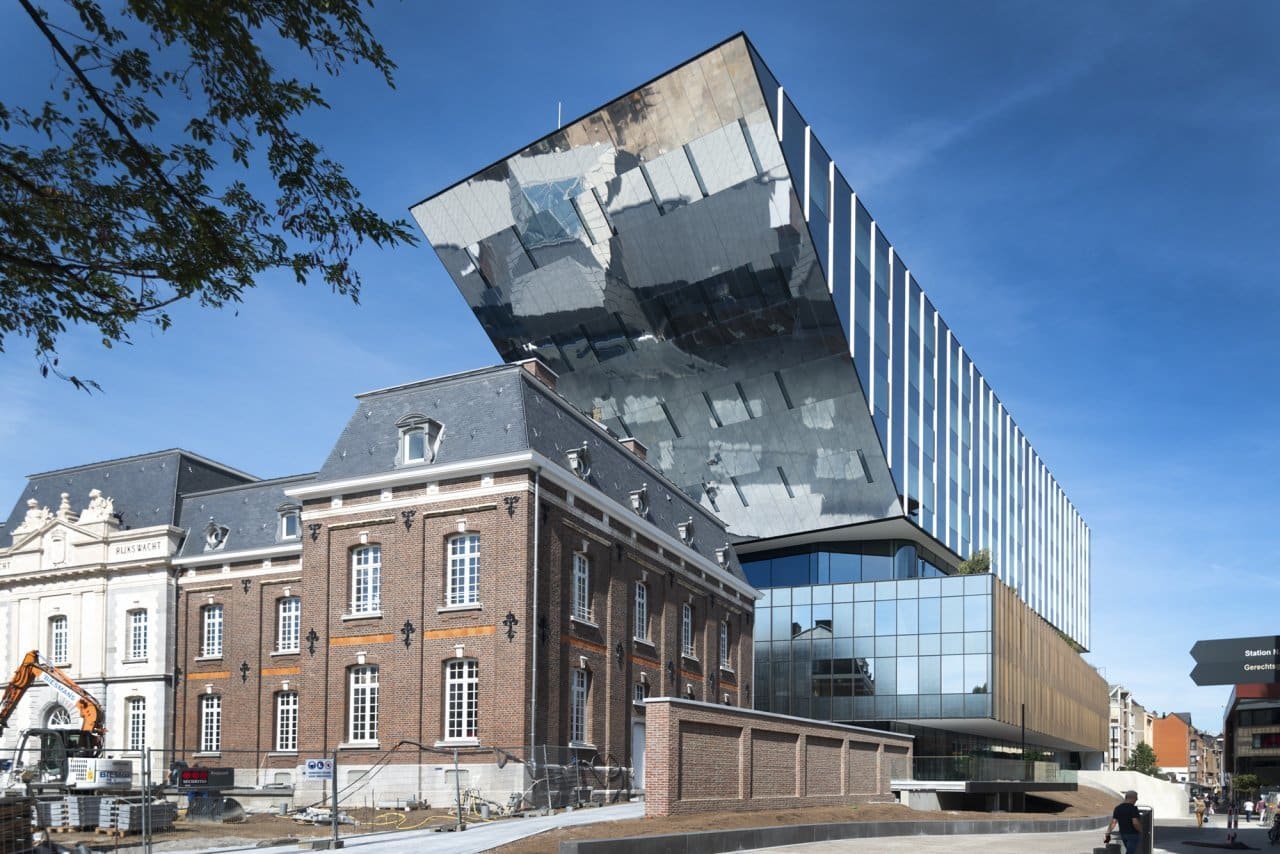 The futuristic city hall of Hasselt, known as 'The Ship'
The futuristic city hall of Hasselt, known as 'The Ship'© Zoontjens
I had gone inside to look at a large charcoal drawing by the artist Rinus Van de Velde. It is one of more than 30 works that form an art walk in Hasselt. Inspired by Rembrandt’s Nightwatch, Van de Velde has drawn an unruly group of locals inside the legendary Hasselt bar Gambrinus. They are drinking, flirting, falling asleep.
It looked like another happy spot.
This article was realised with the support of the Flemish Government.
